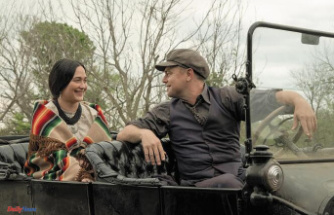Ago to 3,700 years ago a mother died shortly before giving birth to the son that had been planned for months. The death of both of them just show up in a small tomb in southern Egypt, the result of the excavations of a mission Italian-american who pierces the bowels of the place for more than a decade in search of answers to the life-time of the pharaohs.
The mother, whose name is unknown, he was around 25 years old, and was near to give birth. His corpse remained in a narrow cavity in the contracted position and wrapped in leather. The baby rested for millennia on the inside of his mother, stayed in his pelvic area. According to the first analysis, the fetus was head down, so that scholars suspect that mother and child could die during the birth.
The skeleton of the mother also reveals that she suffered from a misalignment of your pelvis, "probably a result of a fracture that did not heal correctly," according to the note released by the ministry of egyptian Antiquities. An infirmity which, in the opinion of the mission led by the egiptóloga Italian Maria Carmela Gatto, of the british university of Leicester, could have caused complications during delivery and resulted in the death of both.
The remains of mother and son have leaned on a burial almost intact excavated in a small cemetery originally used by nomads who moved to Egypt in a desert area of the neighboring Nubia during the Second Intermediate Period (1750-1550 to.C.).
class="icon-foto_16_g"> the Offering of grave goods of the tomb, made from shells of ostrich egg. MINISTRY OF EGYPTIAN ANTIQUITIEStwo years Ago the mission announced the discovery of the skeleton of a baby of sixteen months, which became the first case of scurvy detected among the inhabitants of ancient Egypt. The traces of the lack of vitamin C -necessary for collagen synthesis in humans - appeared scattered over the body of the child in Nag the Qarmila, a small settlement located 15 kilometers north of Aswan, that dates from the time predynastic (3800 to 3600.C.).
"In some texts of ancient Egypt are reports of a disease that coincides with the scurvy but so far no one had found the remains with evidence of the disease", relates to THE WORLD Gatto. "The fact that it was found within the boundaries of the village is very intriguing: was it a disease considered to be rare or unknown by the neighbors and sufficiently unique as to place his tomb in a place so special?", it interrogates.
His work moves forward in the intended original plot a daguerreotype of the life that beat within the confines of the mission at crucial times to ancient Egypt. "The research, analysis, systematic excavations and rescue have discovered many settlements predynastic, cemeteries and rock art with enough information to reconstruct the social and cultural landscape in the southern most part of Egypt," outlines Gatto.
According to the criteria of
Learn more Date Of Update: 20 November 2018, 20:00











